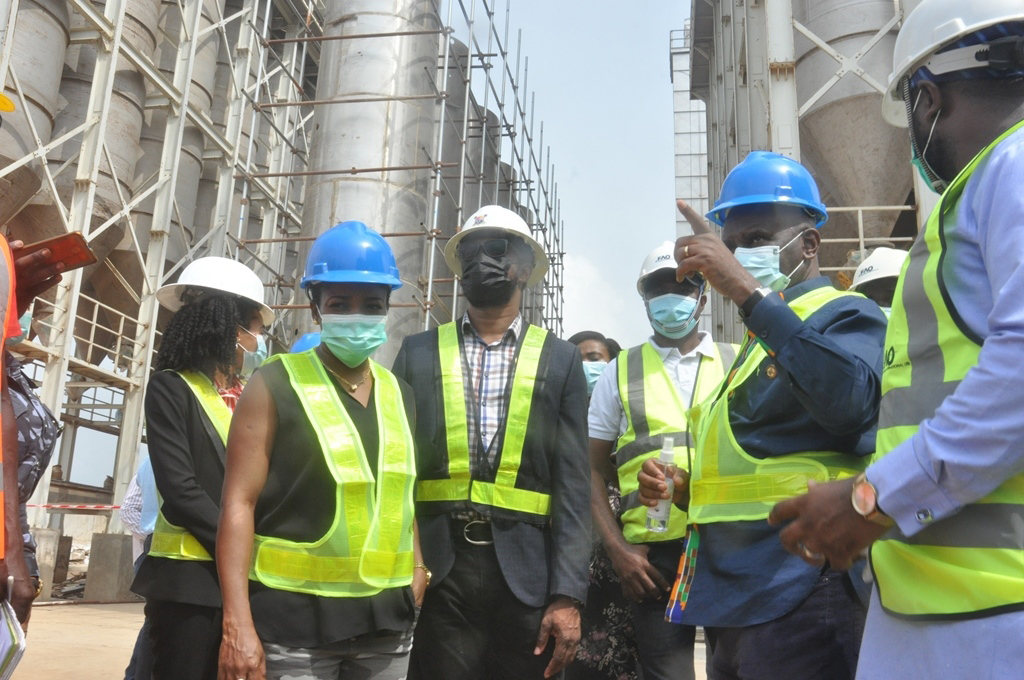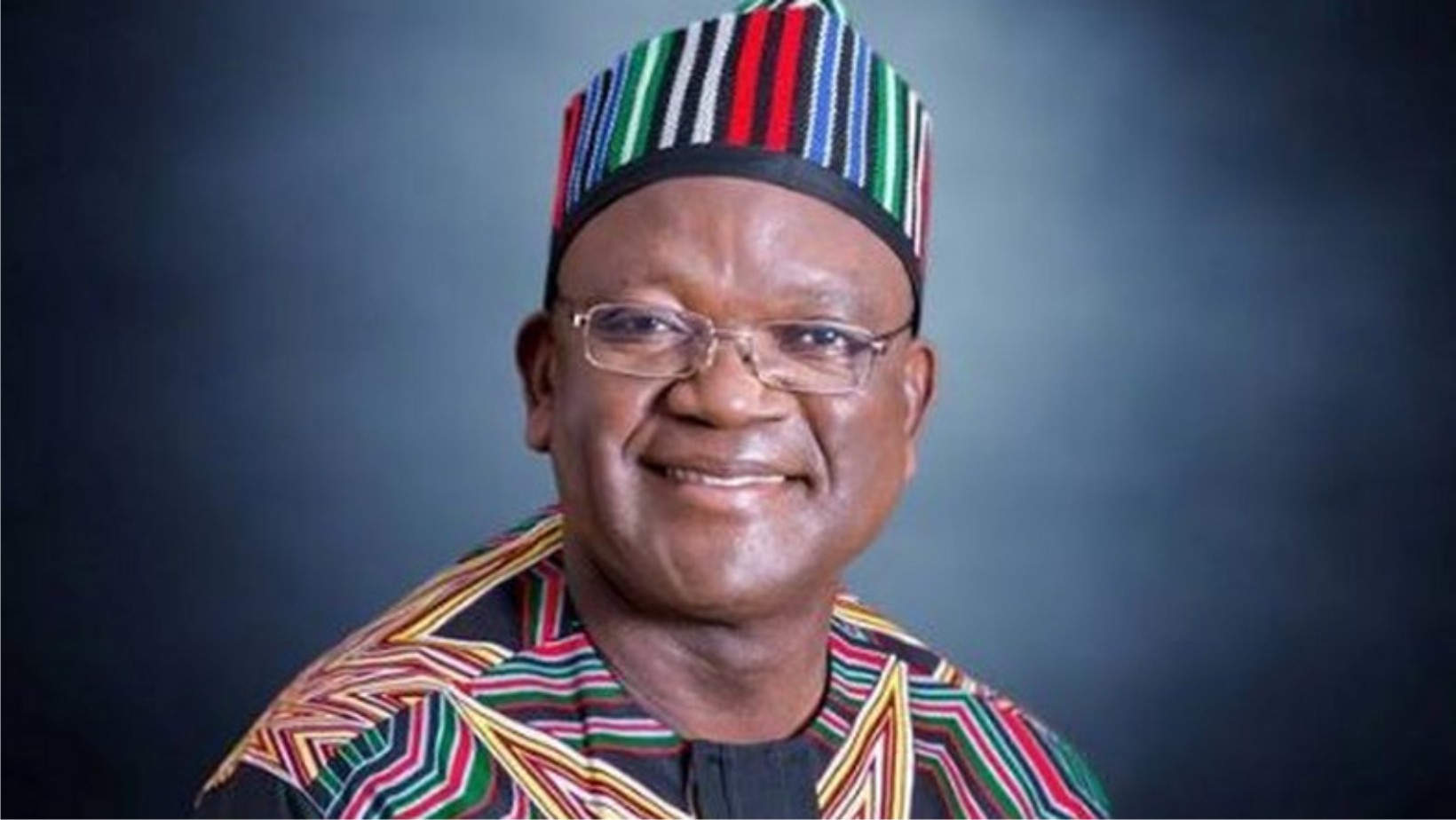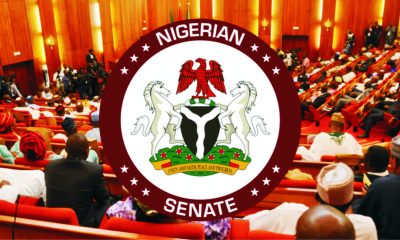Oil & Energy
High Oil Prices Fueling Middle East’s Renewable Energy Boom

In a fairy-tale turnaround that few could have foretold, oil prices have soared to multi-year highs, largely aided by strong post-Covid-19 demand, surprise OPEC+ cuts and the disruption caused by Russia’s war in Ukraine.
The petrodollar windfall has really given a boost to previously battered Gulf economies, allowing some Gulf Arab states to pay down debt and others to diversify their oil-reliant economies in very big ways.
All the six Gulf Arab states – Saudi Arabia, the United Arab Emirates, Kuwait, Qatar, Bahrain, and Oman – are on track to post budget surpluses, many for the first time in a decade, thanks to buoyant oil prices and years of fiscal reforms.
But it’s not just the Arabian oil giants that will be enjoying the good times. In its latest forecast, the World Bank has predicted that in 2023, the entire Middle East and North Africa (MENA) region will grow 3.5%, more than twice the global average growth rate of 1.7%, thanks mainly to high energy prices and increased oil production.
GCC growth is expected to stabilise at 3.7% this year after expanding at a blistering 6.9% clip in 2022.
Although hydrocarbons remain the backbone of MENA’s economy, the realities of climate change, and wild oil price swings have been forcing Gulf nations to restrategise and diversify their economies away from oil, and Saudi Arabia is leading the way, again.
Although Saudi Energy Minister, Prince Abdulaziz bin Salman, recently made waves in the oil community after telling Bloomberg News that Saudi Arabia intends to pump every last drop of oil and is going to be the last man standing, Saudi Arabia has crafted one of the most ambitious clean energy blueprints: Crown Prince Mohammed bin Salman’s Vision 2030 economic plan.
In the economic plan, Saudi Arabia has set a target to develop 60 GW of renewable energy capacity by the end of the decade, which compares with an installed capacity of roughly 80 GW of power plants burning gas or oil.
So far, Saudi Arabia has only made limited progress deploying renewables with just 520 MW of utility-scale solar in operation while 400 MW of wind power is under construction.
With its sun-scorched expanses and steady Red Sea breezes, Saudi Arabia is prime real estate for renewable energy generation.
Last year, Saudi Arabia’s national oil company, Saudi Aramco, sent shockwaves through the natural gas markets after it announced that it was kicking off the biggest shale gas development outside of the United States.
Saudi Aramco said it plans to spend $110 billion over the next couple of years to develop the Jafurah gas field, which is estimated to hold 200 trillion cubic feet of gas.
The state-owned company hopes to start natural gas production from Jafurah in 2024 and reach 2.2 Bcf/d of sales gas by 2036 with an associated 425 million cubic feet per day of ethane.
Two years ago, Aramco announced that instead of chilling all that gas and exporting it as LNG, it will convert it into a much cleaner fuel, Blue hydrogen.
Saudi Aramco has told investors that Aramco has abandoned immediate plans to develop its LNG sector in favor of hydrogen.
Nasser said the kingdom’s immediate plan is to produce enough natural gas for domestic use to stop burning oil in its power plants and convert the remainder into hydrogen. Blue hydrogen is made from natural gas either by Steam Methane Reforming (SMR) or Auto Thermal Reforming (ATR) with the CO2 generated captured and then stored.
As the greenhouse gasses are captured, this mitigates the environmental impacts on the planet.
Last year, Aramco made the world’s first blue ammonia shipment, from Saudi Arabia to Japan.
Japan, a country whose mountainous terrain and extreme seismic activity render it unsuitable for the development of sustainable renewable energy, is looking for dependable suppliers of hydrogen fuel with Saudi Arabia and Australia on its shortlist.
The Saudi government is also building a $5 billion green hydrogen plant that will power the planned megacity of Neom when it opens in 2025.
Dubbed Helios Green Fuels, the hydrogen plant will use solar and wind energy to generate 4GW of clean energy that will be used to produce green hydrogen.
But here’s the main kicker: Helios could soon produce green hydrogen that’s cheaper than oil.
Bloomberg New Energy Finance (BNEF) estimates that Helios’ costs could reach $1.50 per kilogram by 2030, way cheaper than the average cost of green hydrogen at $5 per kilogram and even cheaper than gray hydrogen made from cracking natural gas.
Saudi Arabia enjoys serious competitive advantage in the green hydrogen business thanks to its perpetual sunshine, wind, and vast tracts of unused land.
Germany has said it needs “enormous” volumes of green hydrogen, and hopes Saudi Arabia will become a key supplier.
Two years ago, Germany’s cabinet committed to invest €9B (about $10.2B) in hydrogen technology in a bid to decarbonise the economy and cut CO2 emissions.
The government has proposed to build an electrolysis capacity of 5,000 MW by 2030 and another 5,000 MW by 2040 over the next decade to produce fuel hydrogen.
The European economic powerhouse has realised it cannot do this alone, and will require low-cost suppliers like Saudi Arabia especially as it doubles down on its green energy commitments following a series of devastating floods in the country.
Back in 2021, the Emirates Nuclear Energy Corporation (ENEC) announced the commissioning of the country’s first-ever nuclear power plant, the Barakah Unit 1.
The 1,400-megawatt nuclear plant has become the single largest electricity generator in the UAE since reaching 100% power in early December, and is now providing “constant, reliable and sustainable electricity around the clock.
“ENEC says Barakah unit 1 is “now leading the largest decarbonisation effort of any industry in the UAE to date.”
Following in the footsteps of Saudi Arabia, the UAE is also laying a strong foundation for the energy transition.
Masdar, the clean energy arm of Abu Dhabi sovereign wealth fund Mubadala, is building renewable capacity in central Asia after signing a deal in April 2021 to develop a solar project in Azerbaijan.
Since its inception in 2006, Masdar has built a portfolio of renewable energy assets in 30 different countries, having invested about $20bn to develop 11GW of solar, wind and waste-to-energy power generation capacity.
And now Masdar says it intends to apply the lessons gleaned abroad to develop clean energy capacity back at home.
“Solutions we have developed in our international operations will definitely have applications here in the UAE”, says Masdar’s El-Ramahi.
By: Alex Kimani
Source from Bloomberg News.
Oil & Energy
FG Woos IOCs On Energy Growth
The Federal Government has expressed optimism in attracting more investments by International Oil Companies (IOCs) into Nigeria to foster growth and sustainability in the energy sector.
This is as some IOCs, particularly Shell and TotalEnergies, had announced plans to divest some of their assets from the country.
Recall that Shell in January, 2024 had said it would sell the Shell Petroleum Development Company of Nigeria Limited (SPDC) to Renaissance.
According to the Minister of State for Petroleum Resources (Oil), Heineken Lokpobiri, increasing investments by IOCs as well as boosting crude production to enhancing Nigeria’s position as a leading player in the global energy market, are the key objectives of the Government.
Lokpobiri emphasized the Ministry’s willingness to collaborate with State Governments, particularly Bayelsa State, in advancing energy sector transformation efforts.
The Minister, who stressed the importance of cooperation in achieving shared goals said, “we are open to partnerships with Bayelsa State Government for mutual progress”.
In response to Governor Douye Diri’s appeal for Ministry intervention in restoring the Atala Oil Field belonging to Bayelsa State, the Minister assured prompt attention to the matter.
He said, “We will look into the issue promptly and ensure fairness and equity in addressing state concerns”.
Lokpobiri explained that the Bayelsa State Governor, Douyi Diri’s visit reaffirmed the commitment of both the Federal and State Government’s readiness to work together towards a sustainable, inclusive, and prosperous energy future for Nigeria.
While speaking, Governor Diri commended the Minister for his remarkable performance in revitalisng the nation’s energy sector.
Oil & Energy
Your Investment Is Safe, FG Tells Investors In Gas
The Federal Government has assured investors in the nation’s gas sector of the security and safety of their investments.
Minister of State for Petroleum Resources (Gas), Ekperikpe Ekpo, gave the assurance while hosting top officials of Shanghai Huayi Energy Chemical Company Group of China (HUAYI) and China Road and Bridge Corporation, who are strategic investors in Brass Methanol and Gas Hub Project in Bayelsa State.
The Minister in a statement stressed that Nigeria was open for investments and investors, insisting that present and prospective foreign investors have no need to entertain fear on the safety of their investment.
Describing the Brass project as one critical project of the President Bola Tinubu-led administration, Ekpo said.
“The Federal Government is committed to developing Nigeria’s gas reserves through projects such as the Brass Methanol project, which presents an opportunity for the diversification of Nigeria’s economy.
“It is for this and other reasons that the project has been accorded the significant concessions (or support) that it enjoys from the government.
“Let me, therefore, assure you of the strong commitment of our government to the security and safety of yours and other investments as we have continually done for similar Chinese investments in Nigeria through the years”, he added.
Ekpo further tasked investors and contractors working on the project to double their efforts, saying, “I want to see this project running for the good of Nigeria and its investors”.
Earlier in his speech, Leader of the Chinese delegation, Mr Zheng Bi Jun, said the visit to the country was to carry out feasibility studies for investments in methanol projects.
On his part, the Managing Director of Brass Fertiliser and Petrochemical Ltd, Mr Ben Okoye, expressed optimism in partnering with genuine investors on the project.
Oil & Energy
Oil Prices Record Second Monthly Gain
Crude oil prices recently logged their second monthly gain in a row as OPEC+ extended their supply curb deal until the end of Q2 2024.
The gains have been considerable, with WTI adding about $7 per barrel over the month of February.
Yet a lot of analysts remain bearish about the commodity’s prospects. In fact, they believe that there is enough oil supply globally to keep Brent around $81 this year and WTI at some $76.50, according to a Reuters poll.
Yet, like last year in U.S. shale showed, there is always the possibility of a major surprise.
According to the respondents in that poll, what’s keeping prices tame is, first, the fact that the Red Sea crisis has not yet affected oil shipments in the region, thanks to alternative routes.
The second reason cited by the analysts is OPEC+ spare capacity, which has increased, thanks to the cuts.
“Spare capacity has reached a multi-year high, which will keep overall market sentiment under pressure over the coming months”, senior analyst, Florian Grunberger, told Reuters.
The perception of ample spare capacity is definitely one factor keeping traders and analysts bearish as they assume this capacity would be put into operation as soon as the market needs it. This may well be an incorrect assumption.
Saudi Arabia and OPEC have given multiple signs that they would only release more production if prices are to their liking, and if cuts are getting extended, then current prices are not to OPEC’s liking yet.
There is more, too. The Saudis, which are cutting the most and have the greatest spare capacity at around 3 million barrels daily right now, are acutely aware that the moment they release additional supply, prices will plunge.
Therefore, the chance of Saudi cuts being reversed anytime soon is pretty slim.
Then there is the U.S. oil production factor. Last year, analysts expected modest output additions from the shale patch because the rig count remained consistently lower than what it was during the strongest shale boom years.
That assumption proved wrong as drillers made substantial gains in well productivity that pushed total production to yet another record.
Perhaps a bit oddly, analysts are once again making a bold assumption for this year: that the productivity gains will continue at the same rate this year as well.
The Energy Information Administration disagrees. In its latest Short-Term Energy Outlook, the authority estimated that U.S. oil output had reached a record high of 13.3 million barrels daily that in January fell to 12.6 million bpd due to harsh winter weather.
For the rest of the year, however, the EIA has forecast a production level remaining around the December record, which will only be broken in February 2025.
Oil demand, meanwhile, will be growing. Wood Mackenzie recently predicted 2024 demand growth at 1.9 million barrels daily.
OPEC sees this year’s demand growth at 2.25 million barrels daily. The IEA is, as usual, the most modest in its expectations, seeing 2024 demand for oil grow by 1.2 million bpd.
With OPEC+ keeping a lid on production and U.S. production remaining largely flat on 2023, if the EIA is correct, a tightening of the supply situation is only a matter of time. Indeed, some are predicting that already.
Natural resource-focused investors Goehring and Rozencwajg recently released their latest market outlook, in which they warned that the oil market may already be in a structural deficit, to manifest later this year.
They also noted a change in the methodology that the EIA uses to estimate oil production, which may well have led to a serious overestimation of production growth.
The discrepancy between actual and reported production, Goehring and Rozencwajg said, could be so significant that the EIA may be estimating growth where there’s a production decline.
So, on the one hand, some pretty important assumptions are being made about demand, namely, that it will grow more slowly this year than it did last year.
This assumption is based on another one, by the way, and this is the assumption that EV sales will rise as strongly as they did last year, when they failed to make a dent in oil demand growth, and kill some oil demand.
On the other hand, there is the assumption that U.S. drillers will keep drilling like they did last year. What would motivate such a development is unclear, besides the expectation that Europe will take in even more U.S. crude this year than it already is.
This is a much safer assumption than the one about demand, by the way. And yet, there are indications from the U.S. oil industry that there will be no pumping at will this year. There will be more production discipline.
Predicting oil prices accurately, even over the shortest of periods, is as safe as flipping a coin. With the number of variables at play at any moment, accurate predictions are usually little more than a fluke, especially when perceptions play such an outsized role in price movements.
One thing is for sure, though. There may be surprises this year in oil.
lrina Slav
Slav writes for Oilprice.com.
-
Rivers4 days ago
HOS Tasks Rural Dwellers On RAAMP … As Project Sensitization Team Visit Degema, AKULGA
-

 Politics4 days ago
Politics4 days agoReps Constitution Review Committee Holds Zonal Hearing For Rivers, C’River, Akwa Ibom In Calabar
-
Opinion4 days ago
Is Nigeria Democratic Nation?
-

 News4 days ago
News4 days agoI’m Committed To Community Dev – Ajinwo
-

 News4 days ago
News4 days ago2027: I Stand With Southern Presidency -Ortom
-
Politics4 days ago
Lagos LG Polls: Police Restrict Movement, Tightens Security
-

 News4 days ago
News4 days agoSenate Replaces Natasha As Committee Chairman
-
Opinion4 days ago
Checking Herdsmen Rampage

